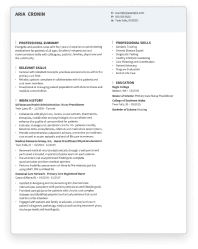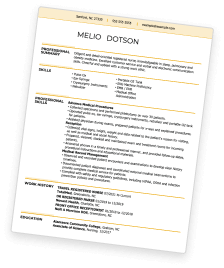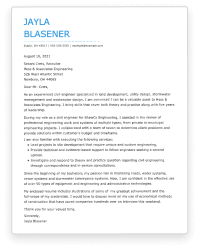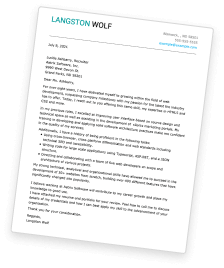Research Analyst Resumes: Overview
As a research analyst in the sciences, you play a pivotal role in gathering and analyzing data to drive critical decisions. You may find yourself working in various environments, such as:
- Laboratories
- Academic Institutions
- Pharmaceutical Companies
- Government Agencies
- Market Research Companies
Research analysts must possess a keen eye for detail, strong analytical skills, and the ability to communicate findings to stakeholders effectively.
To stand out in the field of research analysis, you need to build a resume that showcases your best qualities and impressive skillset!
If you want to know how to make your research analyst resume stand out, explore our collection of downloadable resume templates and be inspired by our professional examples!
Research Analyst Resume: Choose a Format
The right resume format is essential for effectively showcasing your skills and experience.
Choosing a format that suits your experience level and specific career goals can significantly impact how recruiters perceive your qualifications.
There are three formats to consider for your research analyst resume: chronological, functional or combination.
Chronological Resumes for Research Analysts
Chronological resumes follow a straightforward structure, beginning with your most recent job and moving backward to create a clear timeline.
This format emphasizes your career progression and achievements, making it ideal for those with a solid work history in the field.
A chronological format will start with a brief summary or objective statement, followed by a detailed section outlining your work experience, including job titles, dates of employment, and key responsibilities.
Then, in bulleted sentences below each job entry, you would highlight your achievements and contributions in each role, focusing on projects or research studies you’ve conducted, data analysis techniques you’ve utilized, and any publications or presentations you’ve contributed to.
A chronological format is the most commonly used format for resumes. So it is also compatible with applicant tracking systems (ATS), increasing your chances of getting your resume in front of the right audience.
Functional Resumes for Research Analysts
The next format to consider is a functional resume. A functional format emphasizes your skills and qualifications over your work history.
This format is particularly beneficial if you have employment gaps or are transitioning into a new industry.
To create a functional resume, begin with a strong summary or objective statement highlighting your key skills and areas of expertise. Follow this with a detailed skills section showcasing your proficiency in data analysis software, research methodologies, and communication skills.
You might also include a brief overview of relevant projects or experiences rather than specific job titles and dates.
While this format can work well for someone lacking relevant experience, experts warn that it is not very compatible with ATS. Also, employers often prefer a detailed work history, which means they might overlook a candidate who submits a functional resume.
Combination Resumes for Research Analysts
A combination resume blends elements of chronological and functional formats, allowing you to showcase your skills and work experience equally.
This format is excellent for someone with limited experience as a research analyst or transitioning from a different line of work.
A combination resume format for a research analyst begins with a summary or objective statement briefly outlining your career goals and critical qualifications. Next, you would provide a detailed skills section highlighting your technical expertise, analytical abilities, and communication skills.
Then, you can include a chronological overview of your work history, focusing on key achievements and experiences that demonstrate your capabilities as a research analyst. Highlight any relevant projects, research studies, or publications to showcase your expertise in the field. Conclude with sections for education, certifications, and additional skills to provide a comprehensive snapshot of your qualifications as a research analyst.
Choosing a Format
Choosing the right format is critical in crafting a great resume for a research analyst position. Career experts say opting for a chronological format is always safe, even if you don’t have a relevant work history.
Chronological resumes are ATS-friendly and can be tailored to suit any experience level. For example, you can highlight transferable skills from other jobs, such as communication, attention to detail, or project management.
Your previous jobs taught you valuable skills, even if your job titles weren’t related to research analysis.
How to Write a Research Analyst Resume
Once you have chosen a resume format, you can focus on writing your resume content. Knowing how to write an effective resume is key to getting your job as a research analyst.
There are five key sections to include in a resume for a research analyst:
- Contact Information
- Summary or Objective
- Work History
- Skills
- Education
You can also provide additional sections, such as certifications, awards, and volunteer work, if it relevant to the research analyst job description and helps showcase your qualifications.
Each section plays a role in making a great impression on potential employers and landing an interview for your next research analyst position!
Let’s look at how to tailor each section of your resume to make an impact.
Contact Information
Start with the basics – provide your contact information at the top of your resume, where employers will find it easily.
Include your full name, city and state, professional email address, phone number, and LinkedIn profile URL.
A typical contact information section for a research analyst’s resume will look something like this:
Janie Doe
Seattle, WA
jdoe@fake-email.com
555-555-5555
linkedin.com/in/janiedoe
Your name should stand out, but don’t make it so large that it wastes valuable page space. Remember to check for typos and use an easily readable font to ensure employers can contact you.
Summary or Objective
The next section of your resume should be either a summary or an objective statement to briefly introduce your resume.
A well-crafted introduction can grab the hiring manager’s attention and encourage them to keep reading your resume.
A resume summary provides a snapshot of your qualifications, experience, and career achievements. It’s best suited for an experienced research analyst who wants to showcase their expertise and career progression.
For example, a summary of a research analyst’s resume might say:
“Driven and detail-oriented research analyst with a Master’s degree in Biotechnology and 3+ years of experience in pharmaceutical research. Experienced in conducting statistical analysis on clinical trial data to assess the efficacy of new drugs. Skilled at collaborating with cross-functional teams to design and execute research studies, resulting in improved research efficiency and data accuracy.”
An objective statement, on the other hand, is more suitable for entry-level candidates or those changing careers.
It focuses on your career goals and what you hope to achieve in your next position. An effective objective statement should be tailored to the specific job you’re applying for and demonstrate how your skills and aspirations align with the role.
For example, an objective statement for a research analyst’s resume might say:
“Recent graduate with a Bachelor’s degree in Biomedical Engineering seeking a research analyst position in a pharmaceutical company. Eager to apply my knowledge of research methodologies and data analysis techniques to contribute to groundbreaking research projects in the healthcare industry. Committed to utilizing my analytical skills and passion for innovation to drive positive change in patient care.”
Whether it’s a summary or an objective statement – you can effectively communicate your qualifications and career aspirations to potential employers, setting the stage for a successful job application.
Tailor this section to each job you apply for by using keywords from the job posting and directly addressing the employer’s requirements. This will help make your resume more ATS-friendly, ensuring it gets the attention of hiring managers and recruiters.
Work History
Your work history is a crucial section of your resume, providing insight into your professional experience and accomplishments.
Begin by listing your relevant work experience in reverse chronological order, starting with your most recent position.
Include your job title, employer’s name and location, and the dates of employment to give recruiters a clear understanding of your career progression.
Next, under each job entry, write at least three bulleted sentences detailing your key responsibilities and achievements.
Use strong action verbs like conducted, collaborated, analyzed, implemented, or achieved to grab the reader’s attention.
Also, use numbers and percentages to quantify your accomplishments and validate your impact in previous positions.
By incorporating strong action verbs and quantifying your achievements, you can make your work history section more impactful and demonstrate your value as a research analyst.
For example, don’t just say, “researched and resolved data integrity issues.” Instead, write, “Researched and resolved 50% of issues regarding the integrity of data flow in databases.”
The exact format of this section can vary depending on which resume template you use. However, to help you get started, here’s an example of a job entry in the work history section for a research analyst’s resume:
Research Analyst, XYZ Pharmaceuticals, Wichita, KS December 2018 – Present
- Conducted comprehensive statistical analysis of clinical trial data to evaluate the efficacy of novel pharmaceutical compounds.
- Collaborated closely with cross-functional teams, including research scientists and regulatory affairs specialists, to design and execute research studies.
- Implemented innovative data visualization techniques, resulting in a 20% increase in research efficiency and improved decision-making processes.
Remember to tailor this section to each job application by showcasing your most relevant work experience and qualifications.
Customizing your resume content to include industry keywords and language from the job posting will help your resume pass initial screening by ATS and potential employers.
Skills
Next, you will create a clearly labeled skill section. Use this section to highlight the technical skills and soft skills that make you an excellent fit for the job.
Like the other sections of your resume, you should tailor your skills section to match the job description, emphasizing the skills and qualifications that are most relevant to the position.
While hard skills like data collection and analysis are essential to a research analyst’s job, soft skills like collaboration and communicating with stakeholders are also crucial to success.
Include both types of skills to create a comprehensive view of your abilities.
Top 5 Hard Skills for Research Analyst Resumes
- Data Analysis: Research analysts must be proficient in statistical software and data visualization tools to interpret complex datasets. This skill enables you to extract meaningful insights and identify patterns from large volumes of data, empowering informed decision-making.
- Research Methodology: Research analysts must understand various methodologies and techniques to design and implement studies accurately. If specific methods are mentioned in the job description, try to include that language in your skills section to show your unique fit for the job.
- Critical Thinking: Critical thinking is essential for evaluating information objectively and making evidence-based decisions as a researcher. Analysts use critical thinking skills to analyze research findings, identify potential biases or limitations, and draw valid conclusions that contribute to scientific knowledge.
- Technical Writing: Strong written communication skills are vital for research analysts to effectively communicate their findings to stakeholders. Whether preparing reports, presentations, or scientific papers, your ability to convey complex information clearly and concisely ensures that research results are accessible and impactful.
- Problem-Solving: Research analysts encounter various challenges throughout the research process, from designing experiments to analyzing data and interpreting results. The capacity to identify research challenges and develop innovative solutions is critical for overcoming obstacles and advancing scientific inquiry.
Top 5 Soft Skills for Research Analyst Resumes
- Attention to Detail: Research analysts must be meticulous in reviewing data and ensuring accuracy in analysis. Attention to detail minimizes errors and ensures the reliability of research findings, enhancing the credibility of their work.
- Collaboration: Effective collaboration is essential for research analysts to work harmoniously with cross-functional teams. By fostering collaboration, research analysts can leverage diverse perspectives and expertise to tackle complex research projects and achieve shared objectives.
- Time Management: In a fast-paced research environment, research analysts must be skilled at prioritizing tasks and meeting tight deadlines. Effective time management ensures that research projects progress smoothly and are completed within stipulated timelines, maximizing productivity and efficiency.
- Communication: Clear and concise communication is paramount for research analysts to present their findings effectively to diverse audiences. Whether communicating with fellow researchers, stakeholders, or the general public, research analysts must articulate complex concepts in an understandable and engaging way.
- Adaptability: Research analysts must be flexible and open to learning new methodologies and technologies as needed. The ability to adapt to evolving research trends and technologies ensures that research remains relevant and innovative, driving continuous improvement and growth in the field.
For example, a skill section for a research analyst’s resume might look like this:
SKILLS
- Statistical Analysis Software: SPSS, SAS, R
- Data Visualization: Tableau, Power BI
- Programming Languages: Python, SQL
- Research Methodologies: Qualitative and quantitative approaches, hypothesis testing
- Analytical Skills: Regression analysis, ANOVA, factor analysis
- Communication: Written and verbal communication, presentation skills
- Problem-Solving: Critical thinking, adaptability, innovation
Education
Next, you will provide your educational background to let employers know you meet the academic requirements for a research analyst job.
List the highest degree earned and the name and location of the institution. Including your graduation date is only necessary if it is recent or in the near future.
Including a graduation date can introduce age bias into the hiring process, so use caution when including those details.
A typical education section for a research analyst resume might look something like this:
Master of Science in Data Science & Analytics
University of Texas – Austin, TX
In this section, you can also include any honors, awards, or certifications demonstrating your academic excellence and passion for research. However, you may want to create additional sections to highlight that information.
Additional Sections
Consider including optional addition sections to provide valuable insights into your research experience and contributions to the field.
For example, a research analyst’s resume might include additional sections such as:
- Certifications
- Publications
- Presentations
- Awards and Honors
- Professional Affiliations
Top Certifications For Research Analysts
Obtaining relevant certifications can significantly enhance your research analyst resume and demonstrate your commitment to professional development. Consider pursuing certifications such as:
- Certified Clinical Research Professional (CCRP): Established by the Society of Clinical Research Associates, this designation validates your knowledge, skills and abilities as a research professional.
- SAS Certified Statistical Business Analyst: This credential confirms your knowledge of variance analysis, linear and logistic regression, input preparation for predictive models, and model performance measurement.
- Project Management Professional (PMP): Successful project management is crucial to constructing and implementing research studies, making this a valuable certification as a research professional.
8 Tips For Writing A Research Analyst Resume
Tailor Your Resume: Customize your resume for each job application by carefully reviewing the job description and highlighting the most relevant skills and experiences. Focus on showcasing your expertise in data analysis, research methodologies, and any specific requirements mentioned in the job posting.
Quantify Your Achievements: Quantify your achievements using metrics and statistics to demonstrate the impact of your work. For example, quantify the number of research studies conducted, the size of datasets analyzed, or the percentage increase in research efficiency achieved through your contributions.
Use Keywords: Incorporate keywords from the job description to optimize your resume for applicant tracking systems (ATS). ATS software scans resumes for specific keywords and phrases, so using relevant terms related to research analysis, data interpretation, and scientific methodologies can increase your chances of getting noticed by recruiters.
Proofread Carefully: Proofread your resume carefully to ensure accuracy and professionalism. Check for spelling and grammatical errors, as well as formatting inconsistencies. A well-polished resume reflects attention to detail and professionalism, which are essential qualities for a research analyst.
Include a Summary or Objective Statement: Introduce yourself and your career goals with a summary or objective statement at the beginning of your resume. Use this section to highlight your key qualifications, experience, and aspirations as a research analyst. Tailor your summary or objective statement to the specific job you’re applying for to make a strong first impression.
Emphasize Technical Skills: Highlight your technical skills, including proficiency in data analysis software and programming languages. Research analysts rely heavily on technical tools and software to analyze data, so make sure to showcase your expertise in relevant tools such as SPSS, R, Python, or MATLAB.
Showcase Collaboration Skills: Showcase your ability to work independently and collaboratively in a team environment. Research analysts often collaborate with colleagues from diverse backgrounds, so emphasize your teamwork, communication, and interpersonal skills. Provide examples of successful collaborations or team projects to demonstrate your ability to work effectively with others.
Keep It Concise: Keep your resume concise and focused, aiming for a maximum length of two pages. Prioritize the most relevant information and avoid including unnecessary details. Use bullet points and concise language to convey your qualifications and experiences effectively.


Use Hloom's Resume Builder
Key Takeaways
- Choose the right resume format to showcase your skills and experience effectively.
- Highlight your key qualifications, including technical skills, analytical abilities, and relevant certifications.
- Tailor your resume to each job application and include keywords from the job description to make your resume ATS-friendly.
- Use strong action verbs and quantify accomplishments to make your resume more compelling.
Proofread your resume carefully to make a good first impression.
- Use strong action verbs and quantify accomplishments to make your resume more compelling.
Use Hloom's Cover Letter Builder















